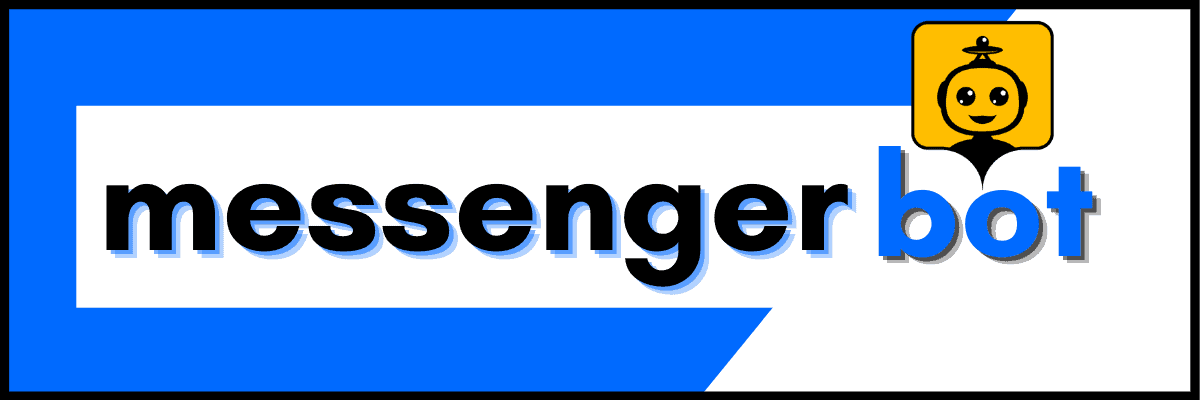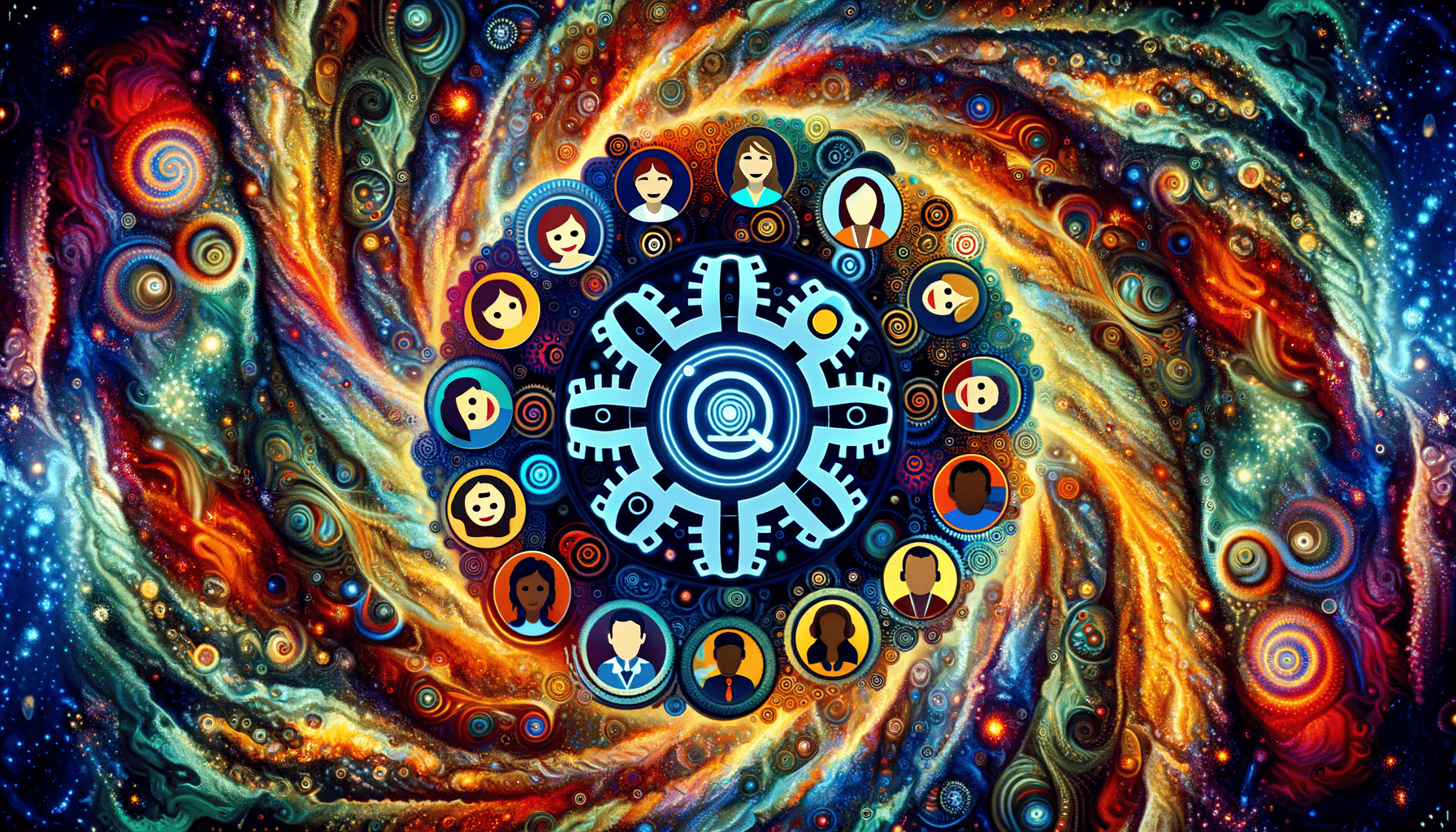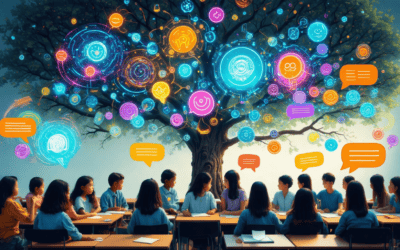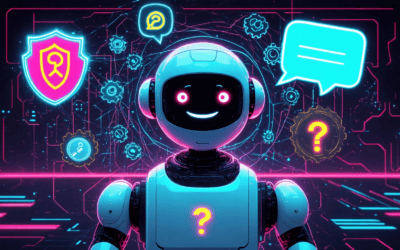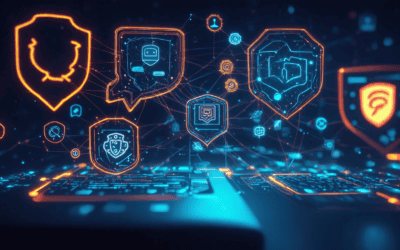In today’s fast-paced digital landscape, businesses are constantly seeking innovative ways to enhance customer satisfaction and streamline operations. One solution that has gained significant traction is the implementation of intelligent helpdesk chatbots. These AI-powered virtual assistants are revolutionizing the way companies interact with their customers, offering round-the-clock support, instant responses, and personalized experiences. By seamlessly integrating chatbots into their customer service strategy, organizations can provide efficient and cost-effective support, reducing wait times and ensuring customer inquiries are addressed promptly. In this comprehensive guide, we’ll delve into the world of helpdesk chatbots, exploring their key features, benefits, and how they can elevate your customer service game.
What is a Help Desk Chatbot?
A. Definition and Purpose of a Help Desk Chatbot
A help desk chatbot is an AI-powered virtual assistant designed to streamline and enhance the IT support experience. It serves as an intelligent and efficient frontline for handling customer service and IT support inquiries, automating routine tasks and providing instant resolutions to common issues. By leveraging natural language processing (NLP) and machine learning, help desk chatbots understand user queries in plain language and engage in human-like dialogues, guiding users through resolution processes.
B. Key Features and Capabilities of Help Desk Chatbots
Robust help desk chatbots are equipped with a range of powerful features and capabilities, including:
- Natural Language Processing (NLP): NLP enables chatbots to understand and interpret user queries in plain language, eliminating the need for complex technical commands.
- Knowledge Base Integration: Chatbots can seamlessly retrieve relevant information and troubleshooting steps from integrated knowledge bases, providing users with accurate and up-to-date solutions.
- Conversational AI: Advanced conversational AI allows chatbots to engage in natural, human-like dialogues, ensuring a seamless and personalized support experience.
- Workflow Automation: Help desk chatbots can automate a wide range of tasks, such as password resets, software installations, and account provisioning, streamlining support processes.
- Ticket Routing: When faced with complex issues beyond their capabilities, chatbots can intelligently route tickets to human agents, ensuring efficient resolution.
- Omnichannel Support: Chatbots can provide consistent support across multiple platforms, including websites, mobile apps, and messaging apps like Brain Pod AI, ensuring a seamless experience for users.
By leveraging machine learning algorithms, help desk chatbots continuously improve their understanding and response capabilities, enhancing the overall efficiency and productivity of IT help desks while improving customer satisfaction through prompt resolutions. Leading companies like Microsoft, IBM, and ServiceNow offer advanced help desk chatbot solutions, setting industry standards for AI-powered support.

II. What is a customer support chatbot?
A customer support chatbot is an artificial intelligence (AI) software designed to simulate human-like conversations and assist customers with inquiries, issues, or tasks related to a company’s products or services. These chatbots leverage natural language processing (NLP) and machine learning algorithms to understand customer inputs, provide relevant responses, and perform various actions autonomously.
Customer support chatbots offer several advantages, including:
- 24/7 Availability: Chatbots operate round-the-clock, ensuring customers receive immediate assistance without waiting for human agents.
- Cost Efficiency: Automating routine queries and tasks reduces the workload on human support staff, leading to cost savings.
- Consistent Responses: Chatbots provide standardized, consistent responses based on predefined scripts or knowledge bases, ensuring uniform customer experiences.
- Scalability: Chatbots can handle multiple conversations simultaneously, making them highly scalable for businesses with high customer traffic.
- Data Collection: Chatbots can gather valuable customer data, such as frequently asked questions, pain points, and feedback, which can inform product improvements and customer service strategies.
According to a study by IBM (“The Customer Service Defector Study,” 2022), businesses that implemented chatbots experienced a 30% increase in customer satisfaction rates and a 25% reduction in operational costs.
Furthermore, research by Gartner (“The Future of Customer Service,” 2021) suggests that by 2025, proactive customer engagement facilitated by chatbots and virtual assistants will increase customer satisfaction rates by 25% for organizations that adopt these technologies.
It’s important to note that while chatbots excel at handling routine queries and tasks, they may still require human intervention for complex or sensitive issues. As such, many businesses adopt a hybrid approach, combining chatbot automation with human agent escalation for a seamless customer experience.
A. Difference between helpdesk and customer support chatbots
While helpdesk and customer support chatbots share similarities in their primary function of assisting customers, they differ in their scope and application. Helpdesk chatbots are specifically designed to handle technical issues, troubleshooting, and support requests related to a company’s products or services. They are typically deployed by IT departments, software companies, or technology-focused businesses.
On the other hand, customer support chatbots have a broader scope and cater to a wider range of customer inquiries, including product information, order tracking, billing queries, and general assistance. These chatbots are commonly used by various industries, such as retail, e-commerce, banking, and hospitality.
While helpdesk chatbots are tailored to address technical problems and provide solutions, customer support chatbots are more versatile and equipped to handle a diverse set of customer needs, from pre-sales inquiries to post-purchase support.
B. Benefits of using chatbots for customer service
Implementing chatbots for customer service offers numerous benefits to businesses, including:
- Improved Customer Experience: Chatbots provide instant responses, 24/7 availability, and consistent service, leading to enhanced customer satisfaction and loyalty.
- Increased Efficiency: By automating repetitive tasks and handling routine queries, chatbots free up human agents to focus on more complex issues, improving overall productivity.
- Cost Savings: Chatbots reduce the need for large customer service teams, resulting in significant cost savings for businesses.
- Scalability: Chatbots can handle multiple conversations simultaneously, making them highly scalable for businesses with high customer traffic.
- Data Collection and Analysis: Chatbots can gather valuable customer data, which can be analyzed to identify pain points, improve products or services, and optimize customer service strategies.
- Personalized Assistance: With the integration of machine learning and natural language processing, chatbots can provide personalized recommendations and assistance based on customer preferences and purchase history.
According to a study by Forrester Research, businesses that implemented virtual agents or chatbots experienced a 70% reduction in call volumes, a 60% reduction in email inquiries, and a 40% decrease in operational costs.
As customer expectations for seamless and convenient support continue to rise, businesses across various industries are increasingly adopting chatbot technology to enhance their customer service offerings and gain a competitive edge.
III. How to get AI chatbot for free?
As an AI-powered chatbot platform, I understand the desire to explore cost-effective solutions, especially for startups and small businesses. Fortunately, there are several ways to get an AI chatbot for free, although the options and capabilities may vary. Let me guide you through the most viable options:
A. Open-source chatbot platforms and tools
One popular approach is to leverage open-source chatbot frameworks and platforms. These tools provide the necessary infrastructure and resources to build and customize chatbots without incurring any upfront costs. However, it’s important to note that while the software itself is free, you may need to invest in hosting and development resources.
Some prominent open-source chatbot platforms include Rasa, Botpress, and DeepPavlov. Rasa, for instance, is a Python-based framework that offers natural language understanding (NLU) and dialogue management capabilities, while Botpress is a JavaScript-based platform with visual flow builders and NLU support.
While these open-source solutions offer flexibility and control, they often require technical expertise in areas such as programming languages (e.g., Python, JavaScript) and infrastructure management. If you have a skilled development team or are willing to invest in learning these technologies, open-source chatbot platforms can be a cost-effective option.
B. Free trials and freemium options for AI chatbots
Many commercial chatbot providers offer free trials or freemium plans that allow you to experience their AI-powered chatbots without any upfront costs. These options are particularly useful for testing and evaluating the platform’s features and capabilities before committing to a paid plan.
For example, Brain Pod AI, a leading provider of generative AI solutions, offers a free demo that allows you to experience their AI chatbot, image generator, and AI writer. While the free demo has limitations, it provides a glimpse into the platform’s capabilities and can help you determine if it aligns with your needs.
Additionally, major cloud providers like Google (Dialogflow), Amazon (Lex), and Microsoft (Azure Bot Service) offer free tiers or free trials for their conversational AI services. These platforms provide pre-trained natural language understanding (NLU) models, dialogue management, and integration with various channels, making them suitable for experimenting and prototyping.
While free tiers and trials often have usage limits or feature restrictions, they can be valuable resources for evaluating AI chatbot solutions without any upfront financial commitment.
IV. Is chat chatbot free?
When it comes to chatbots, there are both free and paid options available, each offering different levels of features and capabilities. The choice between a free or paid chatbot solution depends on your specific needs and the level of sophistication you require for your business.
A. Pricing models for chatbot solutions
Many basic chatbot platforms offer free plans with limited functionality, while more advanced AI-powered chatbots with natural language processing and machine learning capabilities often come at a cost. Free chatbots typically have restricted features like predefined flows, simple rule-based responses, and limited integrations. They can handle basic inquiries and straightforward conversations but may struggle with complex queries or personalized interactions.
On the other hand, paid chatbot solutions offer more robust features like advanced natural language understanding, context-aware responses, omnichannel deployment, analytics, and customization options. These AI-driven chatbots can provide more human-like conversations, handle complex queries, and integrate with various systems for seamless customer experiences.
According to a study by Chatbots Magazine, the average cost of a basic chatbot ranges from $5,000 to $40,000, while more sophisticated AI chatbots can cost upwards of $100,000 or require ongoing monthly subscriptions. However, the exact pricing varies based on factors like the chatbot platform, required integrations, customization needs, and the level of AI sophistication desired.
Reputable sources like Gartner, IBM, and Microsoft offer enterprise-grade chatbot solutions with AI capabilities, but their pricing is often tailored to specific business requirements. Alternatively, platforms like Dialogflow, Amazon Lex, and IBM Watson offer pay-as-you-go models or tiered pricing plans based on usage and features.
B. Cost-effective options for small businesses and startups
For small businesses and startups with limited budgets, there are several cost-effective options for implementing chatbots. One popular choice is to leverage open-source chatbot platforms like Botkit, Rasa, or Hugging Face, which provide free or low-cost solutions for building and deploying chatbots. However, these options may require technical expertise and ongoing maintenance.
Another cost-effective approach is to leverage freemium or free trial offers from AI-powered chatbot platforms like Messenger Bot. Our platform offers a free trial, allowing you to experience the power of our AI-driven chatbot and determine if it meets your business needs before committing to a paid plan. Additionally, we offer flexible pricing options tailored to the requirements of small businesses and startups, ensuring you only pay for the features you need.
By exploring these cost-effective options, small businesses and startups can leverage the power of chatbots to enhance their customer service, lead generation, and overall user experience without breaking the bank.

A. Popular chatbot examples and success stories
As chatbots continue to revolutionize customer service and support experiences, several prominent examples have emerged as trailblazers in this domain. Among them, ChatGPT stands out as the conversational AI chatbot developed by Anthropic that has taken the world by storm.
ChatGPT’s widespread popularity can be attributed to its exceptional ability to understand and respond to complex queries with contextual awareness, generating coherent and nuanced responses. According to a study by the AI research company Anthropic, ChatGPT outperformed other language models in tasks like question-answering, dialogue, and creative writing. Its broad knowledge base spanning diverse fields allows it to converse on virtually any topic with depth and clarity, drawing insights from credible sources like academic papers, news articles, and expert blogs.
Moreover, ChatGPT’s impressive language generation capabilities, producing grammatically correct and stylistically appropriate text that reads naturally, have set it apart from its predecessors. This is a result of training on vast datasets using advanced transformer-based models like GPT-3. Its versatility in applications like writing assistance, code generation, task planning, and creative ideation has made it a valuable tool for professionals, students, and hobbyists alike.
While not without limitations, ChatGPT represents a significant milestone in conversational AI, sparking discussions around the potential impact of such technologies on various industries and society as a whole.
Beyond ChatGPT, other notable chatbot examples and success stories include Amazon’s virtual assistant, which has streamlined customer service for the e-commerce giant, and Salesforce’s Einstein Bot, which leverages AI to automate routine tasks and enhance customer interactions.
B. Helpdesk chatbot open source options and use cases
For businesses seeking to implement chatbot solutions tailored to their specific needs, open-source options offer a cost-effective and customizable alternative. One popular open-source chatbot platform is Botkit, which provides a comprehensive framework for building and deploying chatbots across various messaging platforms, including Slack, Microsoft Teams, and Facebook Messenger.
Another notable open-source chatbot platform is Rasa, which focuses on conversational AI and natural language understanding. Rasa’s flexible architecture allows developers to create highly intelligent chatbots capable of understanding complex user inputs and providing contextually relevant responses.
Open-source helpdesk chatbots have proven invaluable in various use cases, such as streamlining customer support by handling frequently asked questions, providing instant responses, and routing complex queries to human agents. They can also assist in automating routine tasks like order tracking, appointment scheduling, and password resets, freeing up support teams to focus on more complex issues.
Furthermore, open-source chatbots can be leveraged for lead generation and sales, engaging with potential customers, answering product-related queries, and guiding them through the sales funnel. Additionally, they can be integrated into collaboration platforms like Microsoft Teams or Slack, facilitating internal communication and task management within organizations.
By leveraging the flexibility and customization options of open-source chatbot platforms, businesses can tailor these solutions to their unique requirements, ensuring a seamless integration with existing systems and processes.
What is the difference between a chatbot and a virtual assistant?
Chatbots and virtual assistants are both conversational AI systems designed to interact with users through text or voice inputs. However, they differ in their capabilities and functionalities.
A. Distinguishing features of chatbots and virtual assistants
A chatbot is a program designed to simulate human conversation by relying on predefined rules and scripted responses. It uses pattern matching and natural language processing (NLP) to understand user inputs and provide relevant answers. Chatbots operate within a limited scope and are typically designed for specific tasks or domains.
On the other hand, a virtual assistant is a more advanced and intelligent system that leverages NLP, machine learning, and other AI technologies to understand and respond to user queries and commands. Unlike chatbots, virtual assistants can perform a wide range of tasks, such as scheduling appointments, setting reminders, controlling smart home devices, and even engaging in complex problem-solving.
Virtual assistants are designed to learn and adapt over time, continuously improving their understanding and capabilities through machine learning algorithms and access to vast knowledge bases. They can engage in contextual conversations, maintain state, and provide personalized responses based on user preferences and past interactions.
B. Advantages of using helpdesk chatbots over virtual assistants
While virtual assistants offer more advanced capabilities, helpdesk chatbots can be advantageous in certain scenarios. Here are some key advantages of using helpdesk chatbots over virtual assistants:
- Specialization: Helpdesk chatbots are designed specifically for customer support and service desk tasks, making them highly focused and efficient in handling common customer queries and issues.
- Cost-effectiveness: Developing and deploying a helpdesk chatbot is generally more cost-effective than implementing a full-fledged virtual assistant, especially for small and medium-sized businesses.
- Scalability: Chatbots can handle a large volume of customer inquiries simultaneously, allowing businesses to scale their customer support operations without significantly increasing human resources.
- Integration: Helpdesk chatbots can seamlessly integrate with existing customer support systems, such as ticketing systems, knowledge bases, and customer relationship management (CRM) platforms, providing a unified and streamlined experience for customers and support teams.
- Consistency: Chatbots ensure consistent and standardized responses, minimizing the risk of inconsistencies or errors that can occur with human agents.
While virtual assistants offer more advanced capabilities and can handle a broader range of tasks, helpdesk chatbots are specifically designed to excel in customer support and service desk scenarios, providing a cost-effective and scalable solution for businesses to enhance their customer experience.
VII. Helpdesk Chatbot Benefits and Advantages
A. Improved Customer Experience and Satisfaction
Helpdesk chatbots are revolutionizing the way businesses interact with their customers, providing a seamless and personalized experience that drives satisfaction to new heights. By leveraging advanced natural language processing (NLP) and machine learning capabilities, these AI-powered chatbots can understand and respond to customer inquiries with human-like accuracy, ensuring prompt and relevant support.
One of the key advantages of helpdesk chatbots is their 24/7 availability. Unlike human support agents who are bound by traditional business hours, chatbots are always online and ready to assist customers whenever they need help. This round-the-clock accessibility eliminates frustrating wait times and enhances the overall customer experience, leading to increased satisfaction and loyalty.
Furthermore, helpdesk chatbots can handle multiple conversations simultaneously, allowing for efficient and scalable support. This capability is particularly valuable during peak periods or when dealing with a high volume of inquiries, ensuring that no customer is left waiting for assistance.
By providing instant and accurate responses, helpdesk chatbots streamline the support process, reducing the need for customers to navigate through complex menus or wait on hold. This convenience and efficiency contribute to a positive customer experience, fostering trust and confidence in the brand.
B. Increased Efficiency and Productivity for IT Support Teams
In addition to enhancing the customer experience, helpdesk chatbots offer significant benefits to IT support teams by boosting efficiency and productivity. These AI-powered assistants can handle routine and repetitive tasks, freeing up human agents to focus on more complex and high-priority issues.
By automating common support requests, such as password resets, software troubleshooting, or basic hardware inquiries, helpdesk chatbots can significantly reduce the workload on IT support teams. This not only improves response times but also allows human agents to dedicate their efforts to more challenging and critical tasks, ultimately leading to better resource allocation and increased productivity.
Moreover, helpdesk chatbots can seamlessly escalate complex issues to human agents when necessary, ensuring that customers receive the appropriate level of support. This seamless integration between AI and human support ensures a consistent and efficient support experience, optimizing the overall workflow and enhancing the IT team’s effectiveness.
Another significant advantage of helpdesk chatbots is their ability to collect and analyze data from customer interactions. This valuable data can provide insights into common issues, pain points, and areas for improvement, enabling IT support teams to proactively address recurring problems and enhance their knowledge base. By leveraging this data-driven approach, businesses can continually refine and optimize their support processes, leading to better resource allocation and cost savings.
When it comes to providing top-notch IT support, helpdesk chatbots offer a powerful combination of improved customer experience, increased efficiency, and enhanced productivity, making them an invaluable asset for businesses of all sizes.
